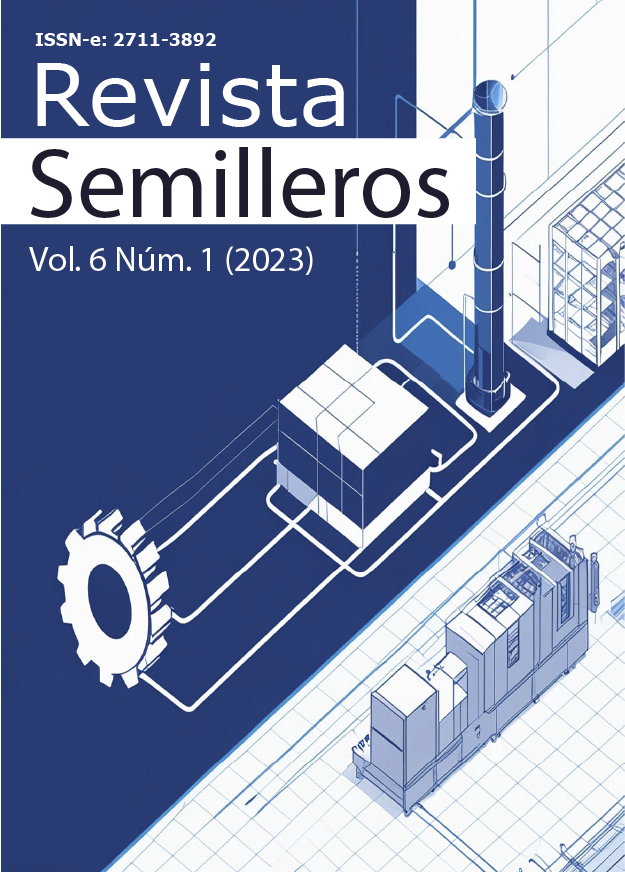CPFR model for forecasting demand in a distributor company for spare parts for sewing machines
DOI:
https://doi.org/10.24054/sei.v6i1.3711Keywords:
Supply chain, Replenishment, CPFR, Demand forecastAbstract
This article was oriented to the application proposal of the CPFR model (Collaborative Planning, Forecasting and Replacement) applied to a distributor of sewing machine spare parts that at a national level has a high rate of demand for its products and which wants to improve your supply chain to generate an accurate and reliable demand forecast. To carry out this project, it was executed with the help of tools such as RACI, the linear regression method was used, taking as a sample a series of time between the sale of industrial flat machines considering a period of 12 months, to make the forecast. of demand, and finally a SWOT graph was made, which defined the issues to take into account either for its continuous improvement or its revision. The results showed that the MAPE margin of error is 15.09% and the behavior of the MAD and TS obtained satisfactory results within the sample, which resulted in a proposal according to the requirements requested by the company.
References
Sewing Machine Market Size, Share & Trends Analysis Report By Type (Electric, Computerized, Manual), By Use Case (Apparel, Shoes, Bags), By Application (Industrial, Residential, Commercial), By Region, And Segment Forecasts, 2022 - 2028. (s. f.). https://www.grandviewresearch.com/industry-analysis/sewing-machine-market-report
L. N. Ramirez Castañeda, C. V. Dimas y C. A. Reyes “Metodología de implementación de un modelo de planificación colaborativa, previsión y reposición (CPFR) en un laboratorio farmacéutico del sector salud”, Revista Inventum, vol. 16, No. 31, pp. 50-60. Julio - diciembre. doi: 10.26620/ uniminuto.inventum.16.31.2021.50-60
L.A. MOLANO , “Metodología para la implementación de un modelo CPFR en una empresa comercializadora de productos de consumo masivo con sus clientes comerciales de canales modernos”2018
Villalta, JC (2022). Implementación del modelo CPFR para la eficiencia de la cadena de suministros en una empresa de café de Moyobamba [Tesis de maestría, Universidad Privada del Norte]. Repositorio de la Universidad Privada del Norte. https://hdl.handle.net/11537/31609
Cassivi,L. Collaboration planning in a supply chain.Supply Chain Management, 11(3), 2006, pp.249-258.
Luisa, A., & Carvaja Lesmes, F. (2022). PROPUESTA DE UNA ESTRATEGIA DE MEJORA POR MEDIO DEL MODELO DE PLANEACIÓN, PRONÓSTICO Y REABASTECIMIENTO COLABORATIVO – CPFR, EN EL PROCESO LOGÍSTICO DE UN OPERADOR LOGÍSTICO. Edu.co. Recuperado de https://repository.unimilitar.edu.co/bitstream/handle/10654/43688/CarvajalLesmesLuisaFernanda2022.pdf?sequence=1&isAllowed=y
Content, R. R. (2021). Aprende cómo distribuir mejor las responsabilidades con la Matriz RACI. Rock Content - ES. https://rockcontent.com/es/blog/matriz-raci/
Betancourt, D. (2022, 22 febrero). Como hacer un promedio simple para pronosticar la demanda. Ingenio Empresa. https://www.ingenioempresa.com/promedio-simple/
Tutoriales, G. (2016). Cómo utilizar una Regresión Lineal para realizar un Pronóstico de Demanda. Gestión de Operaciones. https://www.gestiondeoperaciones.net/proyeccion-de-demanda/como-utilizar-una-regresion-lineal-para-realizar-un-pronostico-de-demanda/
Díaz Pinzón, J. E. (2020). Precisión del pronóstico de la propagación del COVID-19 en Colombia. Revista Repertorio de Medicina Y Cirugía. https://doi.org/10.31260/RepertMedCir.01217372.1045
Medina-Giraldo, A. T. (2023, 1 febrero). Predicción de los precios de vivienda en la ciudad de Medellín y el Área Metropolitana. https://reunir.unir.net/handle/123456789/14630
Sánchez Henao, Y. C. (2022). Propuesta para selección de parámetros de modelos de pronósticos mediante poderación de indicadores claves de desempeño: caso suaviazación exponencial (Doctoral dissertation, Universidad EAFIT).
Karadayi-Usta, S. (2020). An interpretive structural fuzzy analysis for CPFR implementation barriers: a food supply chain case study. In Intelligent and Fuzzy Techniques in Big Data Analytics and Decision Making: Proceedings of the INFUS 2019 Conference, Istanbul, Turkey, July 23-25, 2019 (pp. 423-431). Springer International Publishing.
Hurtado, J. S. (2023, 19 mayo). Matriz RACI ¿Para qué sirve y cómo hacerla? Thinking for Innovation. https://www.iebschool.com/blog/matriz-raci-para-que-sirve-y-como-hacerla-agile-scrum/
Martins, J. (2022). Matriz Raci: qué es, cómo crearla con ejemplos y alternativas online [2022] • Asana. Asana. https://asana.com/es/resources/raci-chart
Pursell, S. (2023, 20 enero). Matriz RACI: qué es, cómo crearla y ejemplos. HubSpot.https://blog.hubspot.es/marketing/matriz-raci
posted by: Josero2018. (s. f.). PATRONES DE COMPORTAMIENTO DE DEMANDA – SERIES DE TIEMPO – Jose Rosas Soluciones. https://www.joserosas.com.co/patrones-de-comportamiento-de-demanda-series-de-tiempo/
Elegir la mejor línea de tendencia para los datos - Soporte técnico de Microsoft. (s. f.). https://support.microsoft.com/es-es/office/elegir-la-mejor-l%C3%ADnea-de-tendencia-para-los-datos-1bb3c9e7-0280-45b5-9ab0-d0c93161daa8
Tutoriales, G. (2016a). Error Porcentual Absoluto Medio (MAPE) en un Pronóstico de Demanda. Gestión de Operaciones. https://www.gestiondeoperaciones.net/proyeccion-de-demanda/error-porcentual-absoluto-medio-mape-en-un-pronostico-de-demanda/
Pronósticos – Jose Rosas Soluciones. (2023, 10 junio). https://www.joserosas.com.co/category/abastecimiento/pronosticos/
Downloads
Published
How to Cite
Issue
Section
License
Copyright (c) 2023 SACHA KARINE CARRASCAL PRADA, ZORAIMA VICTALIA PEÑARANDA AYALA

This work is licensed under a Creative Commons Attribution-NonCommercial-ShareAlike 4.0 International License.












